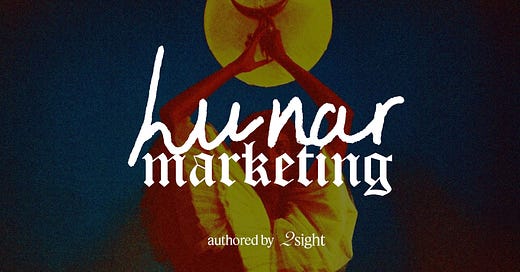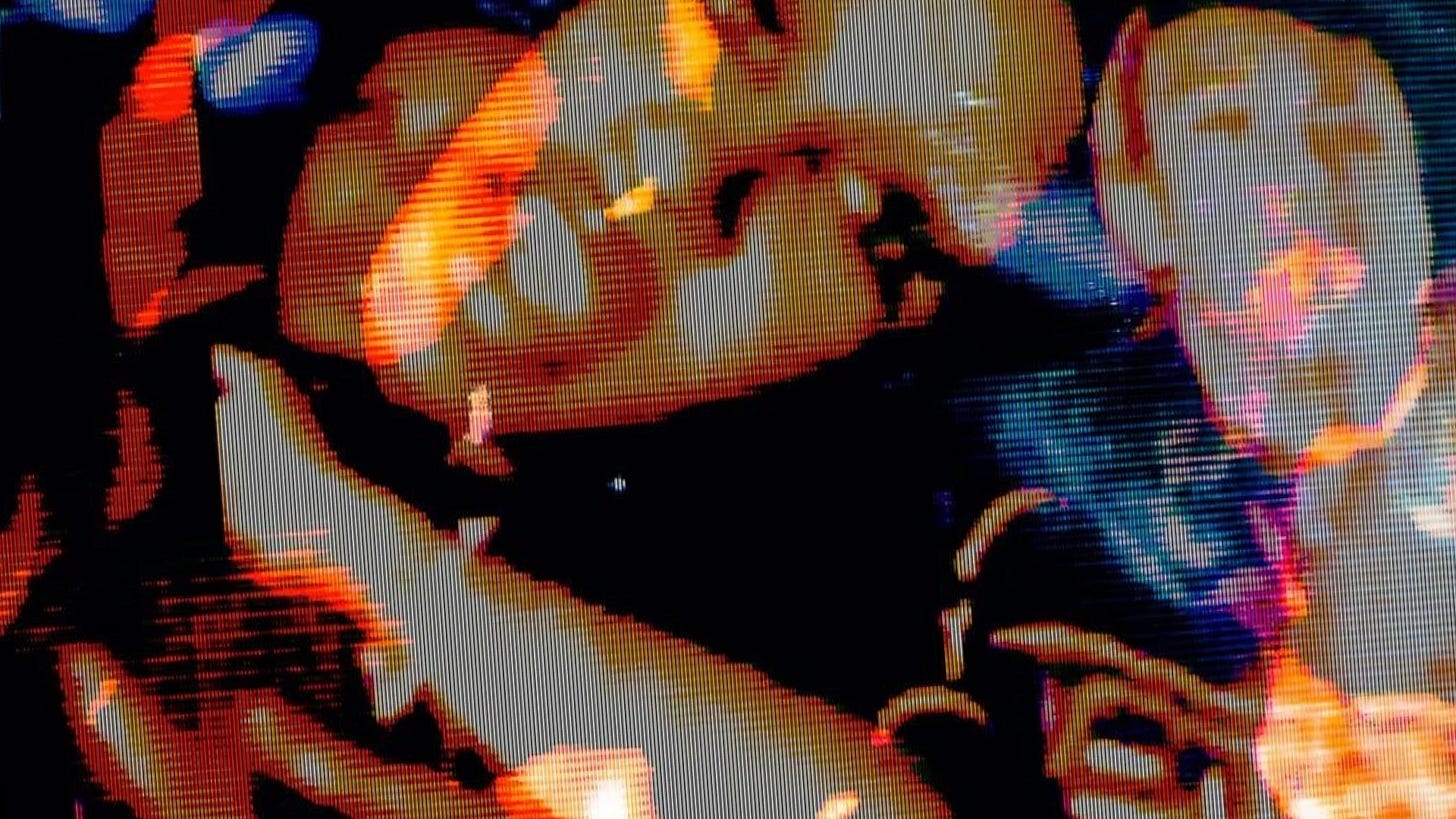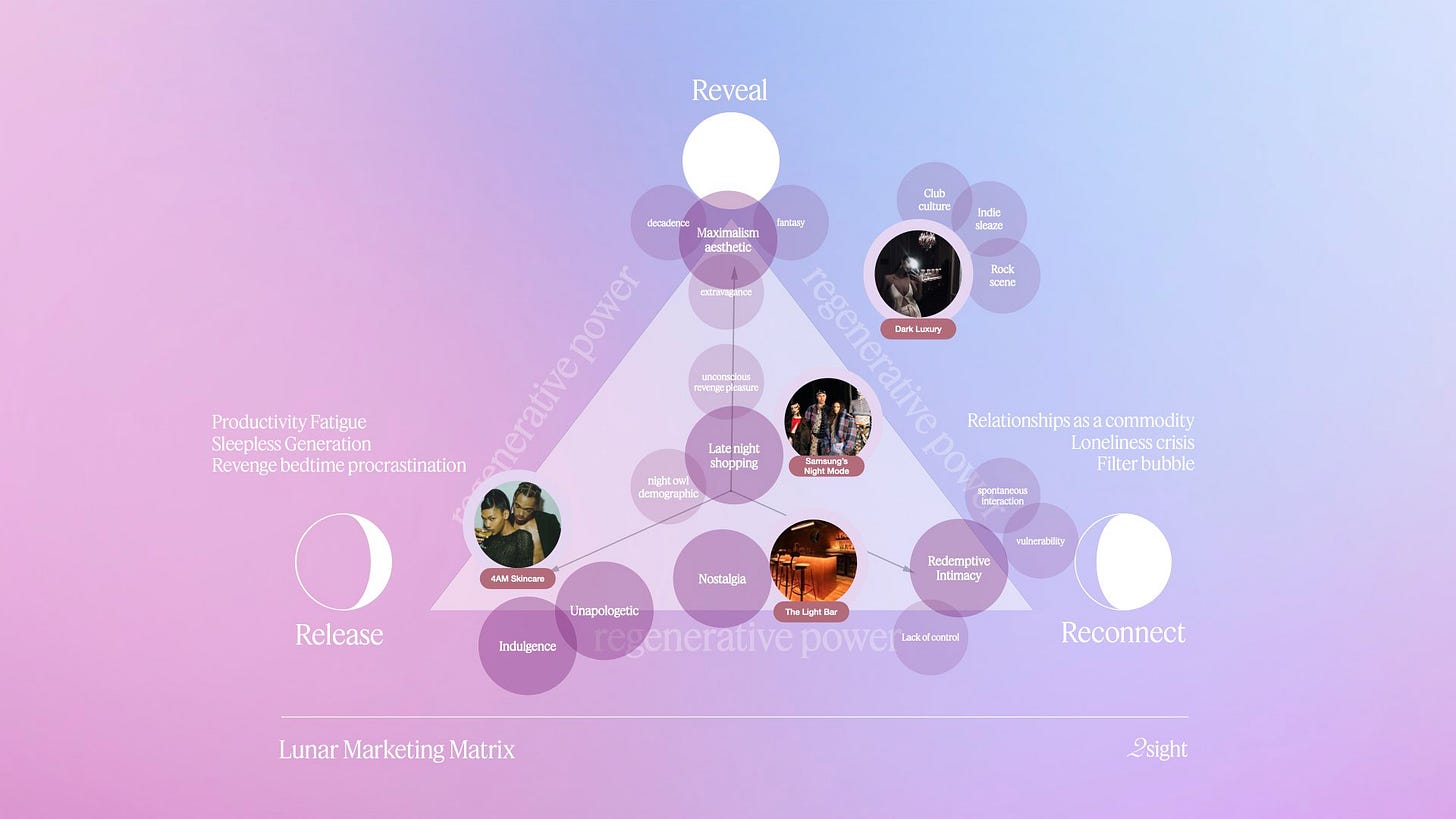Lunar Marketing
How can brands harness Lunar Marketing as an anti-pressure cure, a regenerative organ for culture and for redemptive intimacy?
Welcome to this auto-initiated cahier focusing on trends, foresight and cultural intelligence founded by 2sight, an independent foresight office based in Paris. Aside from forecasting future trends, deciphering consumer intelligence and crafting foresight strategies for our clients, we are taking this 2sight substack medium as a space for creative research, meaningful scepticism, and uplifting learning, where chaos gets enlightened and future trends are demystified.
Following the early 2020’s distressing events and the rise of overpacked daytime schedules, night-time has been reinvested by consumers as an opportunity to explore subversive pleasures and unapologetic behaviours.
Globally, late night shopping is growing as an opportune moment for unconscious revenge pleasure.
Market snapshot:
Consumer expectations for new experiences, services, and ways to shop are on the rise, with growing searches for: “Late night shopping” - Up 100% year over year between 2021 and 2022. (Google Ads Research and Insights, 2022)
72% of respondents had shopped online late at night after bedtime. (Eachnight, 2022)
Between 2020 and 2021, online sales in China made between 8:00pm and 11:00pm increased by 100% year on year — with sales of alcohol, skincare and beauty products, as well as pet services, all surged by 100%. (JD Big Data Research Institute, 2021)
23% of respondents experienced buyer's remorse with purchases made past their typical bedtime. (Eachnight, 2022)
These shifts have forged a spike in consumer interest towards the evening, giving birth to both a Sleepless Generation and a night owl demographic. Brands have the opportunity to capitalise on these new after-hours consumption habits to rebrand the night as the space to release pressure, reveal intimacy and re-connect with oneself and others.
RELEASE:
NIGHT-TIME AS AN ANTI-PRESSURE CURE
We have reached the age of Productive-Everything — where aspirational values and serendipity are getting lost in favour of our daytime optimisation and the glorification of immortal and restless modern entrepreneurs. Back in 2014, the New Yorker already called this rising devotion to overwork "a cult", which now invades our lives beyond work-life.
Getting more sleep, exercising more, eating better, embracing a 10-step beauty routine, etc… Paradoxically, even giving in, treating oneself and resting have turned into performative quests. No time lost. This is when the backlash happens, when people are experiencing a productivity fatigue:
Respectively 46% and 40% of UK Gen Z and Millennial workers state they often feel tired, helpless, or lonely from the world of work due to their workload. (Trachet, 2022)
And it did not get any better since the birth of the “Sleepless Generation”, pleasing itself in a “revenge bedtime procrastination” (sacrificing their sleep time towards pleasurable activities due to a lack of free time during the day).
"Caught in a perfect storm of omnipresent screens, academic overload, and unnecessarily early school-start times, today’s teens are the most sleep-deprived group in human history." (Heather Turgeon and Julie Wright, authors of ‘Generation Sleepless’ book, 2022)
Suddenly, the night — the only time left from this daytime’s “boot-camp” mentality – appears as a timeframe for counter-mechanisms. Its attractive, transgressive and provocative imaginaries enable individuals to finally break free and release the energy and resources accumulated during daytime.
Night becomes an opportunity for brands to invest in this new paradigm and capitalise on the attractive power of the night that once was only dedicated towards rest. Inspired by the New-York’s nightlife aesthetics, 4AM skincare — under the tagline "No Sacrifices Just Skincare. We’re not here to fix your bad habits" – frees consumers from over-complicated skincare routines and wellness pressure and acts in favour of unapologetic party pleasure.
As an aftermath, the night appears for consumers as a reassuring cure to release their non-productive desires: no matter what happens during nightlife, this time solely exists outside our determining realities and responsibilities that stay encapsulated in the daytime. During this particular time, consumption can be more unapologetic and the individuals’ passion points sublimated.
REVEAL:
NIGHT-TIME AS CULTURAL REGENERATION
— THE “DARK LUXURY” CASE
Once we’ve coped with pressured daytime, night-time is also a symbolic moment for rebirth.
“The darkness mythology. Before was the night, the vast night of the origins; then life came from the darkness.” (Michel Pastoureau, author of ‘Noir’ book, 2014)
Following our human circadian cycles, cells are regenerating at night while the brain processes what happened during daytime — leading to unsolicited dreams that work like digestive mechanisms in order to consolidate our memory. Similarly, the darkness of the night acts as a place for trends to be regenerated and commemorated, inviting brands to take new opportunities.
“The night offers a kind of regenerative framework to brands [...] The night allows the transition from the old to the new.” (Ronan Chastellier, author of ‘Tendançologie’ book, 2008)
Among those new opportunities, Night Luxe (also known as “Dark Luxury”) emerges as a marketing phenomenon which capitalises on the regenerative power of night to re-embellish what defines true luxury — especially considering the recent popularisation, and therefore commodification, of the high-end sector. Defying the norms and standards, a touch of generous fantasy, decadence and extravagance defines this Night Luxe landscape.
“Night Luxe is a modern manifestation of the extravagance of the Roaring Twenties. The More is More aesthetic is about indulging in luxury, leisure and living your best party-girl life after the sun goes down.” (Don’t Die Wondering, 2022)
With over 20 million views on TikTok, the hashtags #nightluxe and #darkluxuryaesthetic feature photo posts and reels showing shots of fancy bars, restaurants and cocktails, i.e. martinis or champagne.
While darkness absorbs colours by definition, Dark Luxury aesthetics are inhabited by specific sources of light (such as the moonlight, flashes, candles, urban neons, glitters, etc.), revealing what was put aside by the productivity imperatives of daylight.
In this vein, Samsung celebrated the launch of the new Galaxy S22 Series, which features enhanced Night Mode, by teaming up with designer Charles Jeffrey, pop star Charlie XCX, and director Matilda Finn for a fashion film shot entirely at night and celebrating dancefloors culture.
Indie sleaze, glam rock, club culture and other cultural scenes belonging to the underground (in its very literal meaning) are revealed under those new sources of light — putting them at risk of being mainstream again (think of the 2005’s parties aesthetics).
RE-CONNECT:
NIGHT-TIME AS REDEMPTIVE INTIMACY
Back in the 2000s, night was defined as the most appropriate time for intimacy by 78% of consumers (L'Observatoire de la nuit, 2000). Dating apps and social media later, intimate relationships have been rebranded as a commodity.
“On dating apps, Judith Duportail observed a multiplication of the “shopping list” profiles that describe in detail how the perfect partner should or should not be. Similarly, Liv Strömquist showed that this attitude turns “the other” into a commodity and avoids us from being moved and charmed by an encounter in its entirety.” (Mona Chollet, author of ‘Réinventer l’amour’ book, 2021)
And yet, social media are no longer social since friendship among all generations is in crisis:
27% of Millennials have no close friends, and 22% report they have no friends at all. 15% of Gen X and 9% of Baby Boomers also report having a lack of close friends. (YouGov, 2019)
The Age of Scam (see this great article by Daniel Moldoveanu) gets even more materialised in front of the promised arrival of the Meta-world and its seducing siren songs: immersive experiences, augmented bodies and… community-based relationships.
“The main argument in favour of the metaverse is that it will allow us to have completely new, immersive experiences. Have you tried reality? It is fully immersive.” (‘Lateral Flow’ by Jack Self, architect and critic in the Real Review magazine, issue for Spring 2022)
Till then, what about meaningful relationships we build today and in the near future?
In contrast, tomorrow’s nightlife will mimic a social theatre inhabited by privileged and spontaneous interactions — allowed by darkness that automatically induces a lack of control and increased vulnerability since it impairs our ability to see. In the darkness, we rely on the familiar senses and nostalgic feelings of our inner youth.
As an early example of this, newly-opened The Light Bar revives the nostalgia of East London’s party life by offering a menu named after emblematic local DJs, nightclub collectives and parties from the early 2000s, while featuring a programming that “echoes the iconic parties we used to put on in this area back before many were familiar with Shoreditch,” according to Morten Jensen, the bar’s co-founder.
Brands can capitalise on this moment and its particular conditions to re-connect with their audiences. Just as the iPhone’s night shift, e-commerce, brick-and-mortar retail and conviviality spaces could apply a “dark mode” look-and-feel strategy to foster aesthetics and an environment in favour of redemptive intimacy.






